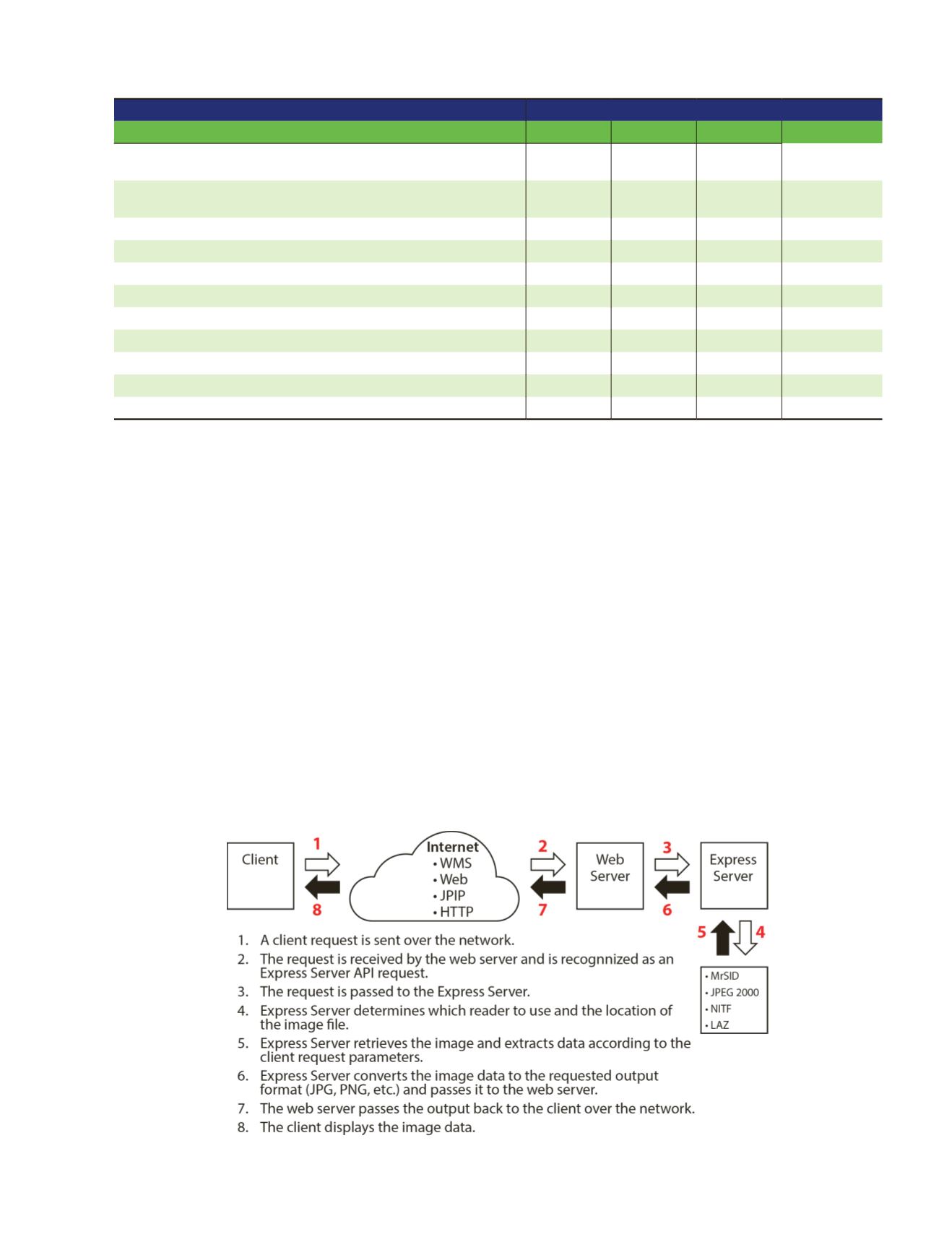
830
November 2016
PHOTOGRAMMETRIC ENGINEERING & REMOTE SENSING
H
osting
I
magery
Express Server hosts imagery directly from a local or net-
work file system. This file system-based approach simpli-
fies image management and requires minimal server ad-
ministration. Administrators can use a simple web-based
administration tool called the Express Server Manager to
point Express Server to the location of imagery on the file
system and configure Express Server settings.
Images on the file system correspond to image catalogs
in Express Server. Catalogs are simply image directo-
ries that administrators make accessible on the server.
I
mage
C
atalogs
Express Server treats every image as part of a catalog.
The catalog is the basic edifice used by Express Server
to organize images and house information about them
and instructions about how to treat them. For the pur-
poses of WMS, a catalog is the same thing as a layer.
Catalogs include several configuration options which
change how the image appears to users. Additionally,
catalogs can be organized into catalog groups so that
users can view multiple related image catalogs through
a single virtual catalog.
V
iewing
I
magery
Express Server’s architecture is standards-based, which
enables rapid image delivery to virtually any client
viewer, regardless of the device or the amount of band-
width required. Express Server responds to a request
formulated according to one of three protocols: WMS,
JPIP, or the Express Server web API. Each request is
in the form of a URL.
Table 1: Support for Common Requirements in LizardTech File Formats.
Output File Format
Output Requirement
MG2
MG3
MG4
JPEG 2000
Lossy output, maximum 3 bands, cropping allowed, no ad-
vanced encoding, output file smaller than 2GB
ü
ü
ü
ü
Advanced encoding (reprojection, color balancing, despeck-
ling, area of interest encoding, etc.)
ü
ü
ü
Output file size greater than 2GB
ü
ü
ü
Lossless output
ü
ü
ü
Mosaic that has MrSID tiles as input
ü
ü
Multispectral input
ü
ü
Optimization
ü
ü
Alpha band
ü
ü
Signed datatypes (e.g. s8, s16)
ü
ü
Arbitrary band mapping
ü
Per-band compression
ü
Figure 2: Visualizing Image Requests.


